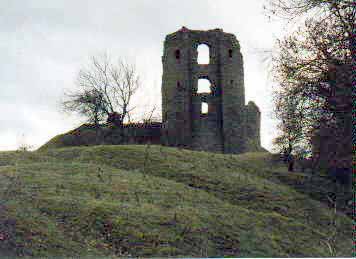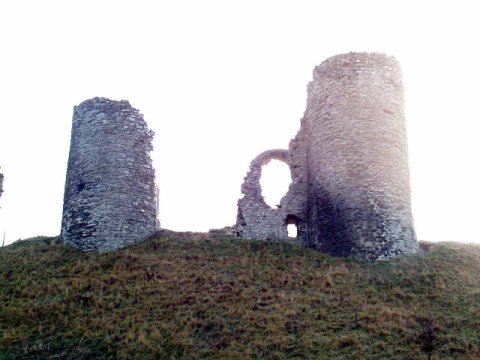Clun

Before 1131 a certain Henry Say, lord of Clun, who may or may not have been the same person as the son of Cadwgan, had granted some of his lordship to Shrewsbury abbey. This Henry is said on no good authority to be the son of Picot. It is just as possible that he was Henry ap Cadwgan, grandson of Picot and prince of Powys as taking a grandfather's surname was relatively common in the twelfth century. Whatever the case, this Henry would appear to have married an unnamed bastard daughter of King Henry I and Sibyl Corbet before 1125. The result was at least one son, a man called Helias Say, who fought against his brother-in-law, Earl Robert of Gloucester, and his ally Miles Gloucester, during the Anarchy.
The genealogy of the Say family is notoriously difficult, but charter evidence suggests that Helias Say of Clun, during the Anarchy, had at least two sons and a daughter. Helias was dead by 1165 when his land of Clun was held by Geoffrey Vere who had married Helias' daughter, Isabella (d.1199). She had previously been wife to William Fitz Alan of Oswestry (d.1160). Helias may also have left 2 sons, Hugh Say (d.1190), who inherited Richards Castle in 1186 from his brother in law, Osbern Fitz Hugh, and Brian Say (d.1175+), who witnessed a charter with his father, Helias, for the Mortimers of Wigmore when he was in Normandy in 1162.
However, it was to Isabella, the daughter of Helias, that Clun barony passed until her death in 1199. After this it passed to the descendants of her first husband, William Fitz Alan of Oswestry (d.1160). Hugh Say (d.1190) witnessed 2 charters with Helias and Brian Say for the Mortimers in May 1162. Brian Say must have been illegitimate or from a second marriage as he was the first of the witnesses of his widowed sister Isabella's grant of her church of Clun to Wenlock priory. Probably the next year William Boterel (1175-99), the new husband of Isabella Say, confirmed the grant with the same witnesses. It seems likely from the above that the Say fee as held by Helias, the grandson or great-grandson of the Domesday Picot, had disintegrated. So too had the barony of Burford and the 2 disintegrations may be linked.
With the death of William Boterel in 1199 Clun castle reverted to the lordship of William Fitz Alan of Oswestry and he probably remodelled the fortress along the lines of Chateau Gaillard in Normandy before his death in 1210. The castle was seized by John Fitz Alan from the custody of King John in 1215. In 1233 the castle was garrisoned by the household troops of King Henry III as the loyalty of John Fitz Alan was ‘suspect’. Late that year the royal garrison successfully withstood a Welsh onslaught led by Prince Llywelyn ab Iorwerth, although the attackers did succeed in reducing the town to ashes. The castle was returned to John Fitz Alan in 1234. On John's death in 1241 the castle passed to his son, another John Fitz Alan. This John married Isabel Aubigny of Buckenham castle and on the death of her brother Earl Hugh Aubigny of Arundel, became de facto earl of Arundel. This John died in 1267 and was succeeded by another John Fitz Alan who died young in 1272 leaving Clun castle in the hands of his father-in-law, Roger Mortimer of Wigmore. On Roger’s death in 1282 his widow, Matilda Braose, expelled the castellan and ridiculed the sheriff of Shropshire from the castle’s battlements - much to the amusement of King Edward I who ordered the sheriff to cease molesting her!
In the fifteenth century the castle was transformed into a hunting lodge by the earls of Arundel who had a horse stud here. They were probably responsible for the great keep which towers down the side of the apparently natural mound to the north. In the wars of Owain Glyndwr the earl of Arundel again fortified Clun castle and the castle saw some service against the rebels. The castle was in ruins by the time of the Civil War of 1642 and never saw action.

The outer ward to the south had a gatehouse and a curtain wall, but now only foundations remain. Beyond this was a further ward now housing a bowling green. A fortified borough lay to the east and the church and Saxon village across the river to the south.
Order Clun Castle
through the PayPal basket below.
Why not join me at other Lost Welsh Castles next Spring? Please see the information on tours at Scholarly Sojourns.
Copyright©1994-2007 Paul Martin Remfry